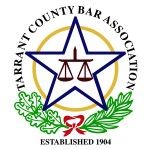Filing for bankruptcy can leave you with many worries about your assets. For many in bankruptcy, the financial woes they face can be for a number of reasons, and the process can feel unfair and leave you in seemingly permanent financial ruin. However, filing for bankruptcy can still leave you with options to protect your assets and yourself from unfair creditors.
Even after you file for bankruptcy, creditors can prevent you from moving forward. To prevent creditors from continuing to collect, you can petition for additional protections in tandem with bankruptcy.
Known in Texas as automatic stay, debtors who file for bankruptcy can ensure they are protected from practices that leave them yet more financially unstable.

Prior to filing for bankruptcy, creditors will try to use several tactics to recoup the money they are owed. Such behaviors include garnishing wages, seizing property, repossessing assets, or even beginning the foreclosure process on the home you own. When your debts outweigh your income, you may be forced to file bankruptcy, but this action does not stop creditors from continuing to collect in these ways.
When filing for bankruptcy, petitioning for an automatic stay notifies creditors that you are beginning the bankruptcy process and stops these collections from occurring. Therefore, you can move forward in resolving your debts through the bankruptcy process. The purpose of this stay is to provide the debtor with time and resources to actively resolve the debts.
Filing for the stay does not eliminate the debts a person may owe but allows them the ability to continue to decide how their assets should be applied to their debts. Under actions such as wage garnishment, creditors take a portion of any monies earned. With an automatic stay, the debtor can collect all the money they earn and work toward settling their debts.
The protection of an automatic stay helps shield debtors from unfair asset collections while they are actively settling their debts. During the stay, creditors may not engage in activity that is harassing, threatening, or otherwise putting pressure on the debtor. The protections are put in place at the moment of filing and remain until the case is considered closed through a court ruling.
While the protection is in place, creditors still have options available to them, and they are allowed to file a motion to modify the stay order.
When a creditor files a motion to modify the stay order, they are seeking to take further action to recover the monies owed to them. Under certain modifications, creditors are allowed to foreclose and repossess certain assets. These collections are done through liens placed on debtors’ assets. Modifications are most often filed when a debtor fails to make payments to the creditor according to the arrangements made in the bankruptcy process.
While these motions are filed by creditors, debtors can still fight back with the help of their bankruptcy attorney. The most effective evidence to fight these motions is documentation showing on-time, proper payment amounts. Sometimes, your attorney is able to mitigate the consequences by negotiating with the creditor for payment arrangements.
Unfortunately, if payments are missed, the automatic stay is removed, and creditors are able to collect debts as necessary once again. This could include garnishing wages, foreclosing on property, repossession, and more. Creditors have a right to use all legal means necessary to recover the debt owed to them once a stay is lifted.
Motions to modify a stay order from creditors are more likely to occur when filing a Chapter 13 bankruptcy versus a Chapter 7 because Chapter 13 has a payment plan that could take up to 60 months. For many creditors, such as mortgage companies, waiting to foreclose on a home for four years is not something they want to do. Therefore, it is important to stay informed through your attorney about your mortgage process and what to expect.
A: Lifting or modifying an automatic stay occurs when a debtor falls behind on their bankruptcy payments. If they owe back payments on a secured loan, the creditor has a right to petition for the automatic stay to be modified so that they can pursue other avenues to collect the debts owed to them. Once the stay is lifted, creditors are able to proceed with foreclosures, repossessions, and other debt collection methods.
A: Creditors who proceed with debt collection during an automatic stay through means such as foreclosure, repossession, wage garnishment, and other protected avenues risk legal action. If they repossess a car, for example, they may be ordered to return the car and pay damages incurred during that time. Damages could include the court and attorney fees that are paid.
A: Vacating an automatic stay is the term used to describe an automatic stay order that has been lifted or modified. It signals that the original order is no longer in place and was either removed or replaced by a different one. Knowing when a stay is vacated can help keep you protected from creditors and also help you understand when your obligations under bankruptcy have been met.
A: Those who are seeking to collect debts are not allowed to engage in any behavior that is considered harassing, oppressing, or abusive in nature toward a debtor. These behaviors include actions such as repetitive phone calls, making threats of violence or harm, or engaging in any other perceived threatening behaviors.
Bankruptcy can leave you with many questions and searching for options and answers. At Steele Law Firm, PLLC, we can provide you with the answers you are looking for, work to obtain the protections you deserve, and settle the debts you owe. If you have questions about bankruptcy or an automatic stay, contact us today and let our team help.




